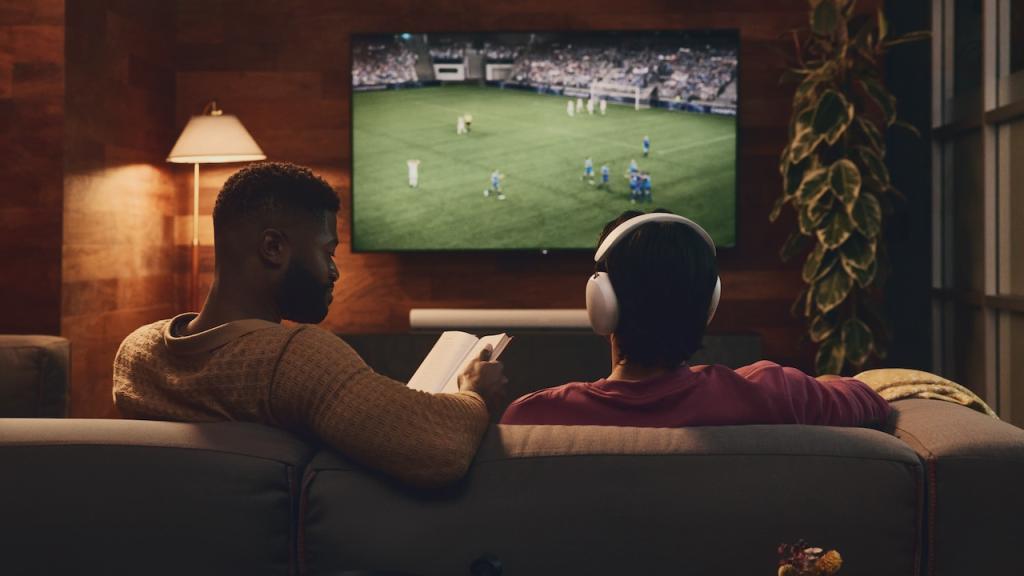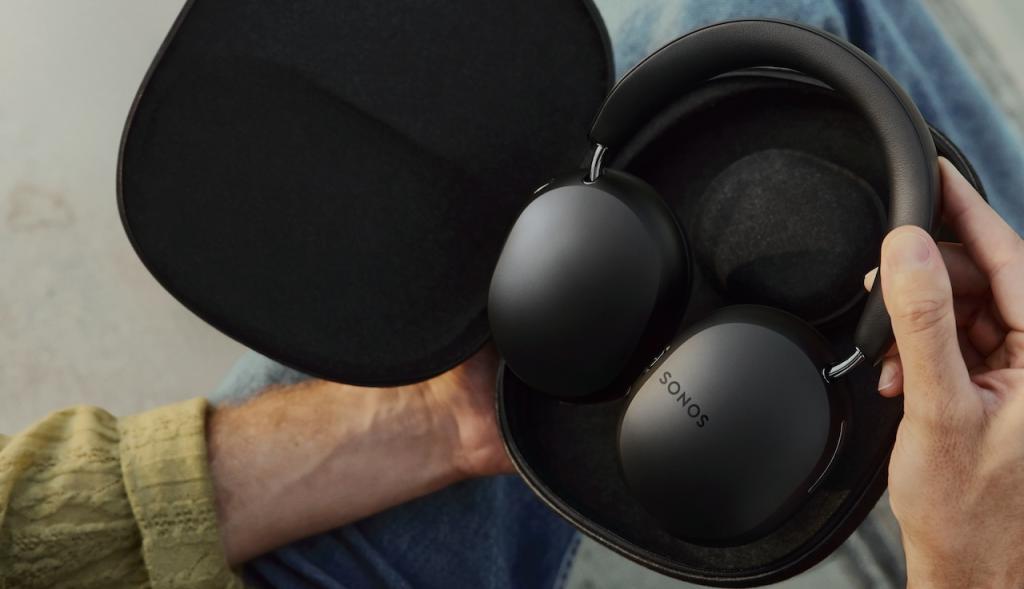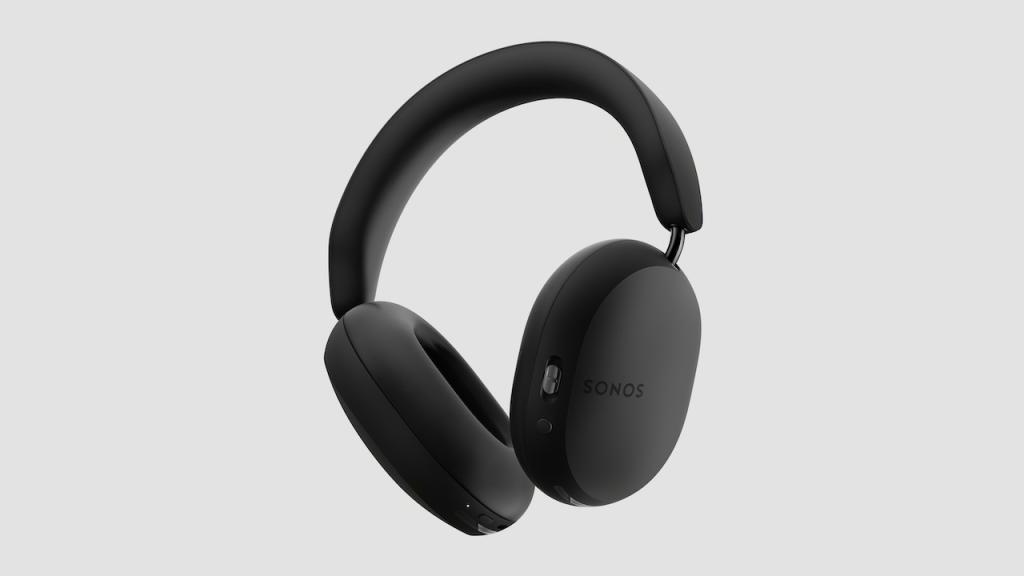Sonos has just announced the least Sonos product ever – a pair of headphones named the Sonos Ace. They come after years of the focus of the Sonos brand being “listening out loud” and sharing music with the people around you. They’ve also been the worst-kept secret in tech for years, with few being surprised by the announcement last night.
But there were some surprises – for a start, they only use a Wi-Fi connection for connecting to your Sonos sound bar, not for connecting to your Sonos system, so you can’t take advantage of all of your equipment with them, the opposite of the rumours. However, having tried them myself, the home theatre feature is witchcraft. No idea how they pulled it off, and it’s pure Sonos all the way.
Sonos has had what could only charitably be described as a rough month, with the launch of the “new and improved” app going down like a lead balloon – if Reddit is to be believed.
So, let’s dive into the Sonos Ace, and what is going on with Sonos at the moment.
What can’t the Sonos Ace do?
What I was looking forward to most in the Sonos Ace was a move away from Bluetooth connections and towards Wi-Fi connections for headphones – that’s my dream. Bluetooth has latency, it’s limited in the quality of music it can convey, and I think we’re coming up to a time when we can start to let it go. Yes, Qualcomm Bluetooth High Speed Link technology (which the Ace supports) does allow for higher quality Bluetooth connections, though that’s currently limited to high-end Snapdragon chipsets. Sonos has spent over a decade building a name based on wi-fi connected multi-room audio. At least for listening in the home, surely they could have stretched to including that in the Ace for more than just home theatre would have been nice.
According to Scott Fink, principle home theatre product manager at Sonos, the aim of being primarily a pair of Bluetooth headphones was to make it easier for people to listen to music on their headphones at home and then walk out the door while still listening.
“We wanted to set expectations that you could be in your home listening to music or podcast or an audio book or whatever it is and then just be able to take that out with you, outside the home. With W-Fi that continuity would be broken. It would be stopping with Wi-Fi and then you wouldn’t be able to continue it as soon as you wanted it. So that’s part of the reason,” he said.
“There’s also just some challenges around battery life. For example, we want to make sure that you get long lasting battery life [it has] 30 hours battery life with ANC or aware mode on, and it extends even further if you happen to turn those features off.”
To me, that doesn’t quite land for a couple of reasons:
- I would rather have higher quality audio, even if it meant that on the rare occasions, I listened to music on headphones and then had to immediately run out the door I needed to press an extra button.
- If people already have a Sonos system, surely they’re more likely to be listening to music out loud at home, and then want to be able to press a button either on the headphones or the app to continue listening to the same playlist on headphones as they left the house? Or they would be listening to music quietly at night.
- If Wi-Fi connectivity is already in the headphones to connect to a soundbar, surely it would be possible to give people the option?
Other people were hoping that the record player they had plugged into a Sonos amp could be listened to on the Sonos Ace when the kids were asleep, and those dreams have been dashed too. When I asked during the briefing about whether that was something that could be added in a future software update, I was given the impression that it was a software, firmware, and hardware combo that limited this functionality. So, it’s something that hopefuls might need to wait until the second generation.
What can the Sonos Ace do?

Play music! And other things you’d use Bluetooth headphones for. It does work with Snapdragon Sound to get lossless audio on certain high-end Android phones, but all other phones will enjoy the regular level of Bluetooth quality. Other than that, it’s just the standard features you’d expect from mid to high end Bluetooth headphones, like noise cancelling, transparency mode, and replaceable ear cups. I haven’t spent enough time with them to pass judgement on how they handle any of those things.
What makes the Ace special, though, is the home theatre mode, where they can connect to a Sonos sound bar and you can transfer the audio from the sound bar to headphones. Given I’m about to spend long nights feeding a newborn, I’m quite psyched about this.
More than just being able to take audio from the sound bar, Ace uses the info given from the Trueplay settings of your home theatre set-up, and uses the microphones in the headphones to work out what your room sounds like. How audio bounces off the walls, windows, and soft furnishings, etc. Then, the Ace will make it sound as though you’re not wearing headphones at all (except for the slight improvement in Spatial Audio). I only spent around 5 minutes listening to this at the demo and I was completely blown away. I’ve never heard anything like it. Truly incredible technology. It’s something you have to hear to believe and could be a complete game changer.
How does this show a new direction for Sonos?
As I said earlier, this is a big move for Sonos, bigger than when the company started releasing portable Bluetooth speakers after years of poo-pooing Bluetooth. Sonos has always been all about listening out loud. It’s their whole thing.
But Sonos also likes making money, and the problem with making high-quality speakers that last (seemingly) forever is that once customers have filled their whole home with Sonos, they don’t really need to buy any more products. Because of the nature of Bluetooth headphones (batteries have a certain usable life, and after that they need to be replaced, though over ears have more than the 2-ish years of true wireless), this means that Sonos now has a market of people who will have to replace their product every 5 or so years. Plus it opens Sonos up to a new market and gives people the opportunity to try Sonos in a way they’re used to interacting with music and then they can branch out from there.
What are the design inspirations for Sonos Ace?

I found the design of the Ace to be quite striking. It wears its inspirations on its sleeve – the ear cup shape draws obvious inspiration from Sennheiser, the padding on the headband is extremely similar to the Bose 700, and the way the ear cups are attached to the band is an obvious nod to the Apple AirPods Max (only better and less flimsy). It doesn’t feel derivative, though, just as though the designers saw what everyone else was doing, and worked out how to make it better.
Aki Laine, director of industrial design at Sonos, looks exactly as sleek, minimalist and cool as you would expect from someone who designs for Sonos. In his presentation he talked about how the ear cup shape was first informed by the shape of the ear, then inspired by a race track, which just so happened to match the oval shapes of the new(ish) Era 300 and Era 100 speakers.
In an interview with Gizmodo Australia, Laine said that one of the biggest challenges to designing a new pair of headphones from scratch is getting the shape of the headband right, and the nails everything else because it’s a ‘hipbone is connected to the everything’ situation.
“With ergonomics and comfort and fit, everything is connected. So the headband curve, what specific curvature you have how much tension or clamping force you put to that headband? How far do the extension arms come out? And how much hinge movement you allow in the cup and which materials you choose,” Laine said.
“So, it’s all interconnected and it affects the comfort, the feeling and the aesthetics as well. It’s tricky navigating through that but our North Star was always the lightweight and comfort.”
Why is Sonos having a bad month?

Because the company updated the app with a new and improved version which was supposed to fix all the problems with the old app. That would be enough to give Sonos a bad month, because people hate change, and no one hates improvements more than die hard, loud fans of a brand.
But it also made the operation slower, “temporarily” removed features users relied on (being able to add songs to the queue, set alarms, turn on a sleep timer, etc) and, speaking from personal experience, made the speaker connection less stable. The Reddit sub has been a dumpster fire and many people (including me) think that Sonos response of calling the release of the app “brave” was a stupid, tone-deaf move.
While some of the features that were removed have started to be added back, many people (including me) have questioned the wisdom of rushing out an incomplete app when there was no obvious reason to not wait an extra week or two.
I put that question to Sonos over email, and heard back from a spokesperson who said, “Building a new software architecture from the ground up and a completely redesigned app experience took us more than two years to complete.
“We thoroughly analysed the risk of delaying some features when determining the timing of the release and what to prioritise for the app’s initial rollout. Every single one of our customers interacts with the Sonos app, so we knew we’d be met with a breadth of reactions. We are eager to continue releasing additional updates and address the feedback we are getting from our customers.”
It does look like Sonos has learned a lot from this experience.
“Our goal is to build the best products for you—to add sound to your lives. Along the way we may make mistakes. What we learned this past week is that going forward we plan to be more communicative about changes that are coming. We are also committed to acting on feedback—and delivering improvements—rapidly.”
This rollout has also highlighted the risks involved in purchasing hardware that is so reliant on an app or other software which can be updated or changed completely out of control of the user. Most objects you buy, you just own them, and they operate the same their whole lifecycle, perhaps with the occasional minor improvement available as a firmware update.
But with devices like Sonos speakers, the hardware might be excellent, yet it’s so reliant on the app that your entire system and experience can be drastically changed whether you want it to or not. Sonos understands that this experience has caused customers to see their relationship to their Sonos systems differently after the update.
“We believe sound innovation is driven through a blend of elegant hardware and intuitive software. This combination is what unlocks better listening experiences for customers, including seamless connectivity with other products and simpler ways to stream a breadth of audio content,” the company said.
“That said, we also understand the importance of maintaining the functionality and features our customers expect from us and rebuilding trust is our top priority. We are working swiftly to resolve issues and address the feedback we’ve been hearing from customers while being more communicative about updates they will experience.”
It is important to note that while many users made grand proclamations about selling off their collections and moving away from Sonos, there has not been a noticeable increase in people selling Sonos speakers from what I can see online.
The Sonos Ace is available in stores on June 5 for $699.
